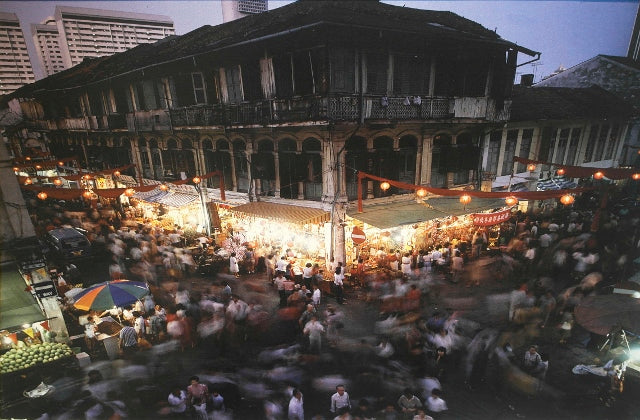Eagle's Eye Art Gallery
Singapore Chinatown at Night
Singapore Chinatown at Night
Couldn't load pickup availability
Photograph Print by Yip Cheong Fun.
This artwork is mounted on mattboard.
Down Memory Lane in Singapore:
Singapore Chinatown at Night
This stunning picture of a night scene in Chinatown taken in 1964 has won a good number of diplomas and medals in many countries for the Master Photographer, Yip Cheong-Fun who was elected by the Photographic Society of New York as The Outstanding Photographer of the Century for his artistic achievements and for his Seascape photography. The picture captured the exciting atmosphere of a Chinatown in Singapore, which had been a shade and shelter of the early Chinese immigrants and people who had gone through the groans and grinds of life during the war and postwar years. The night market in Chinatown was packed with visitors. The atmosphere was indeed electrifying. Men, women, and children thronged the crowded streets. Hawkers yapped and yelled to attract patronage. It was a cacophony orchestrated by street hawkers, street musicians and performers as well as noisy bargain hunters.
This fantastic night scene had its focus on one of the oldest buildings in Chinatown located at the junction of Smith Street and Trengganu Street. From 1887 to 1942, this historic building was used as a Chinese opera theatre, known as Lai Chun Yuen, which was the centre for entertainment in Chinatown. It became an important part of the life of the people there. The theatre was designed by R.A.J. Bidwell, who also designed Raffles Hotel and the Victoria Theatre. Numerous performances were held in this 834 seat theatre, including two historic performances in 1909 in aid of the Canton Flood Relief Fund and the anti-opium movement. The theatre continued to be popular with the Cantonese community until 1927 when motion pictures arrived in Singapore. In 1942, it was converted into a cinema, changing its name to Sung Seng Cinema. The venture failed with the Japanese invasion. In fact, the building was badly damaged by a Japanese bomb in early 1942. After the war, the building was converted into a bazaar. In the 1960s, it was further converted for use as a storage space for hawkers. Today, the building still stands majestically after some renovation and repair. It is used as retail shops and offices. However, the name Lai Chun Yuen still lingers on. It harkens back the sights and sounds of the old theatre in Chinatown and the many performances that enthralled the Cantonese community. Senior citizens still refer to Smith Street as the Theatre Street in fond memory of Lai Chun Yuen, the Chinese Opera Theatre.
Share


